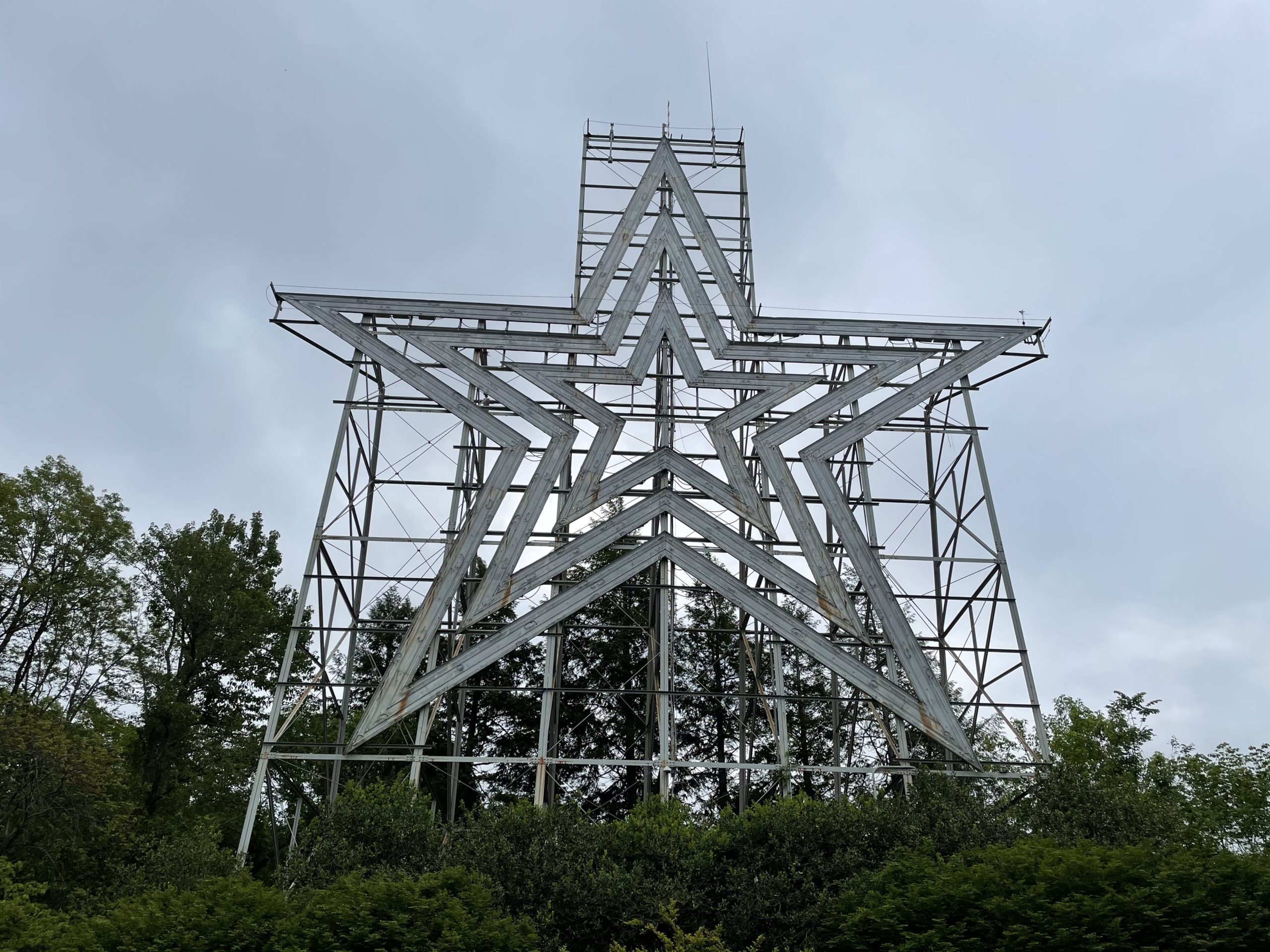I recently stayed overnight in the city of Roanoke in western Virginia; and the next morning, I decided to check out the symbol of the city — and arguably most well known attraction — known as the Roanoke Star.
My Visit to the Roanoke Star and Its Overlook
On a cool and overcast morning, I made the short drive to the summit of Mill Mountain, from where the star watches over the city. A short paved path led to the scenic overlook just below the structure itself.
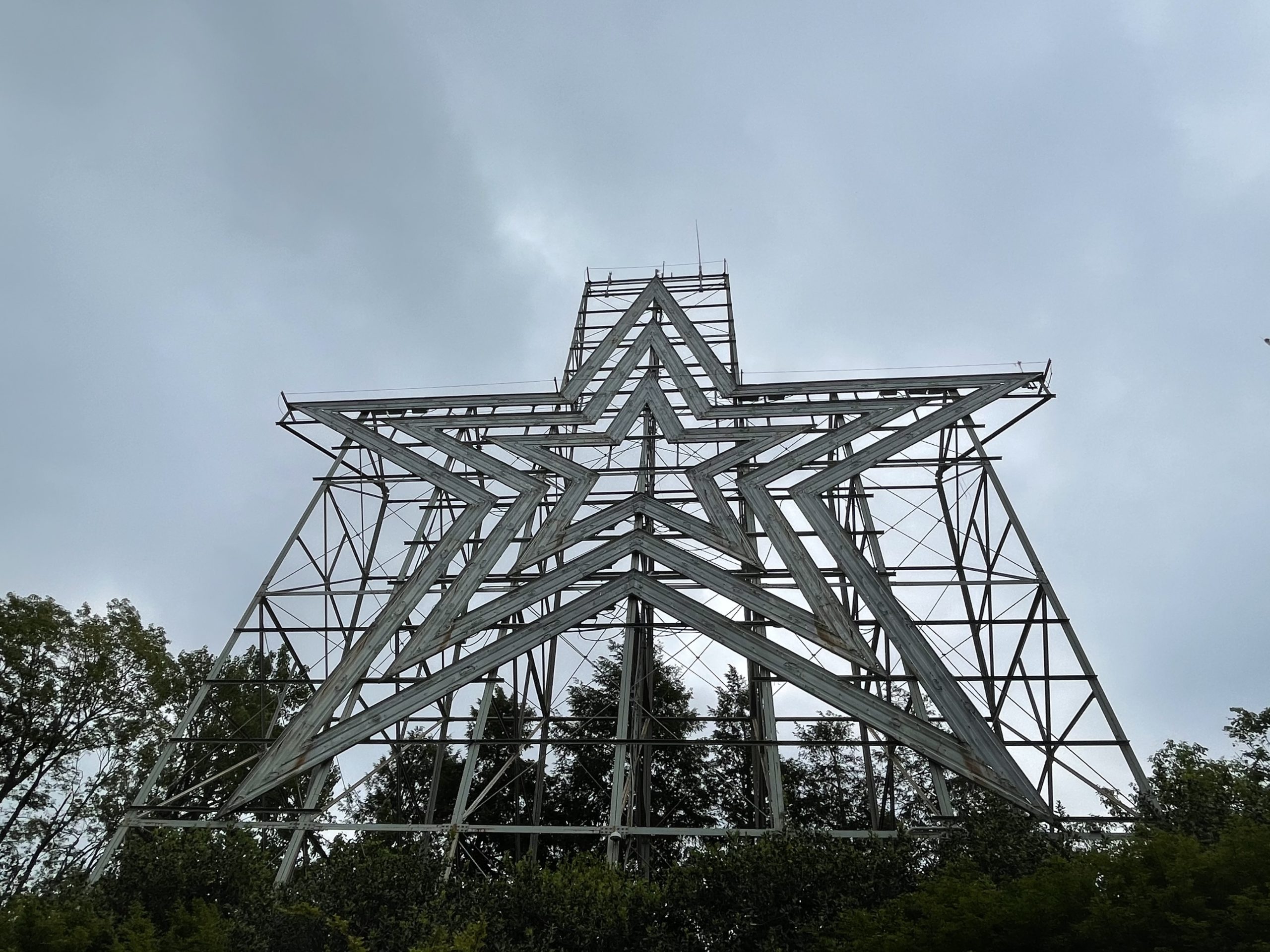
Built in 1949 by Roy Kinsey and his two sons and illuminated on November 23 of that year, the Roanoke Star is the largest freestanding illuminated artificial star in the world at 88.5 feet tall and weighing 10,000 pounds. It is constructed with 2,000 feet of neon tubes, which illuminate at night and it is supported by a steel structure 100 feet tall. Just beneath the star is a sign listing the dimensions and statistics of the star and its structure.
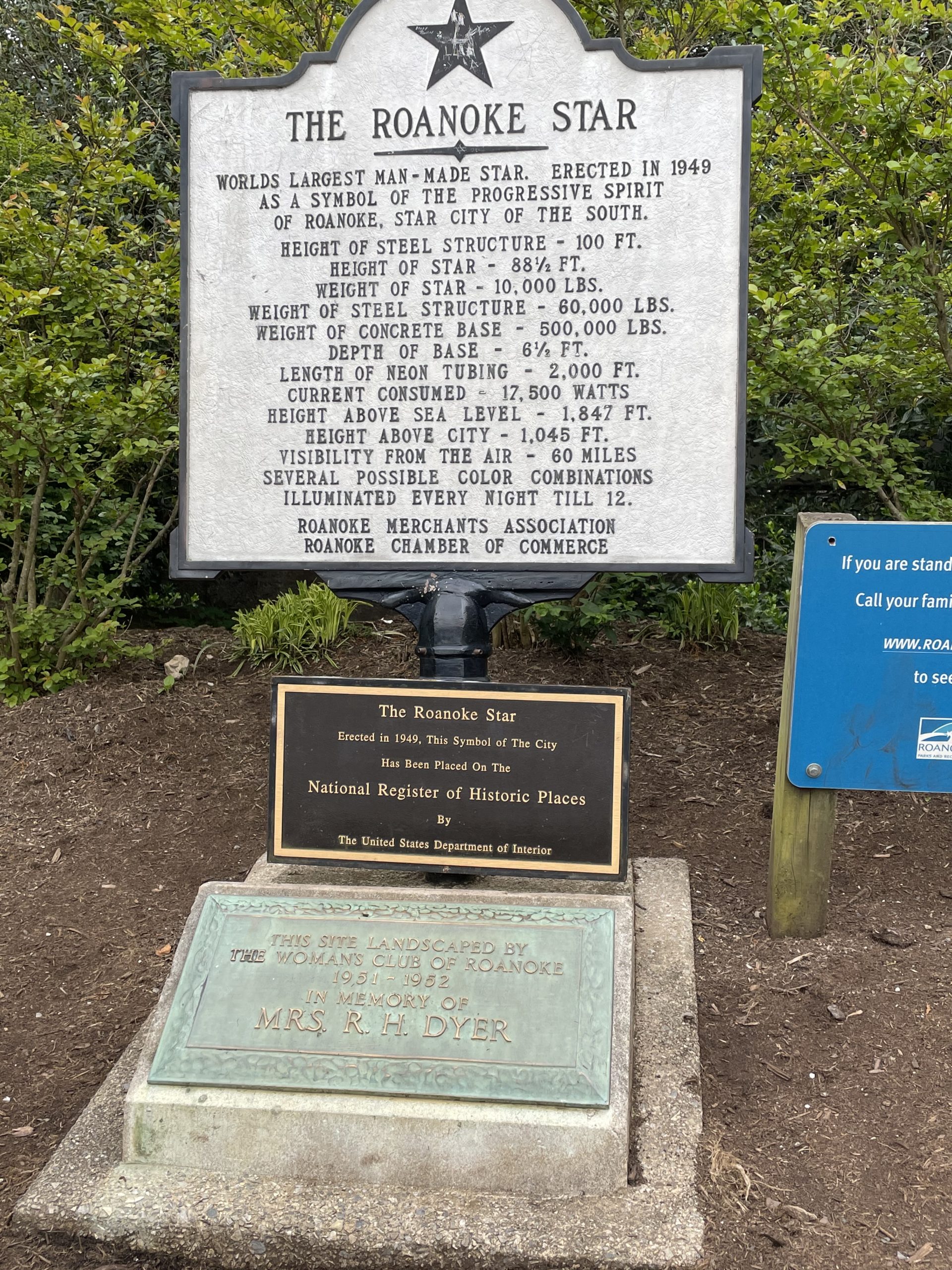
When illuminated, the Roanoke Star is usually white; but has changed colors on several occasions. In September of 2001, it glowed red, white, and blue to honor everybody impacted by the 9/11 terrorist attacks, and has this color scheme every year on Memorial Day, Flag Day, Independence Day, Patriot Day, and Veterans’ Day. The star was white from April 22, 2007 to May 24, 2007 to honor the victims from the Virginia Tech shooting on April 16, 2007. For the one year anniversary of the shooting, the star did not illuminate. The night before my visit, the star was glowing white. I tried to get a picture of the illuminated star at approximately 11:30 at night, however it had already been turned off despite the sign in the photograph above stating that it is illuminated until midnight.
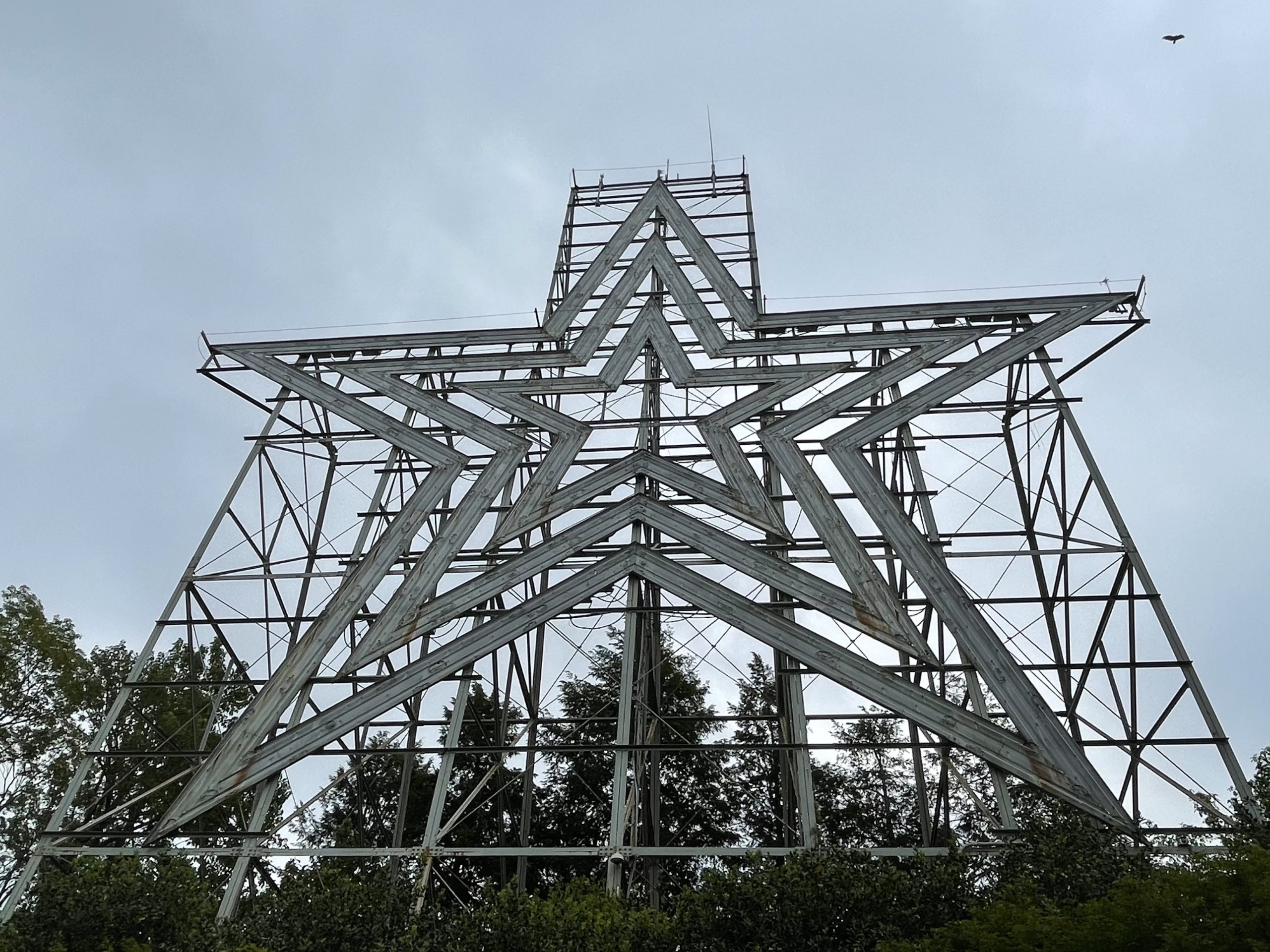
The Roanoke Star was initially built to serve as a temporary decoration for the 1949 holiday season and be taken down the following year, but it was later decided that the star would permanently become part of the city.
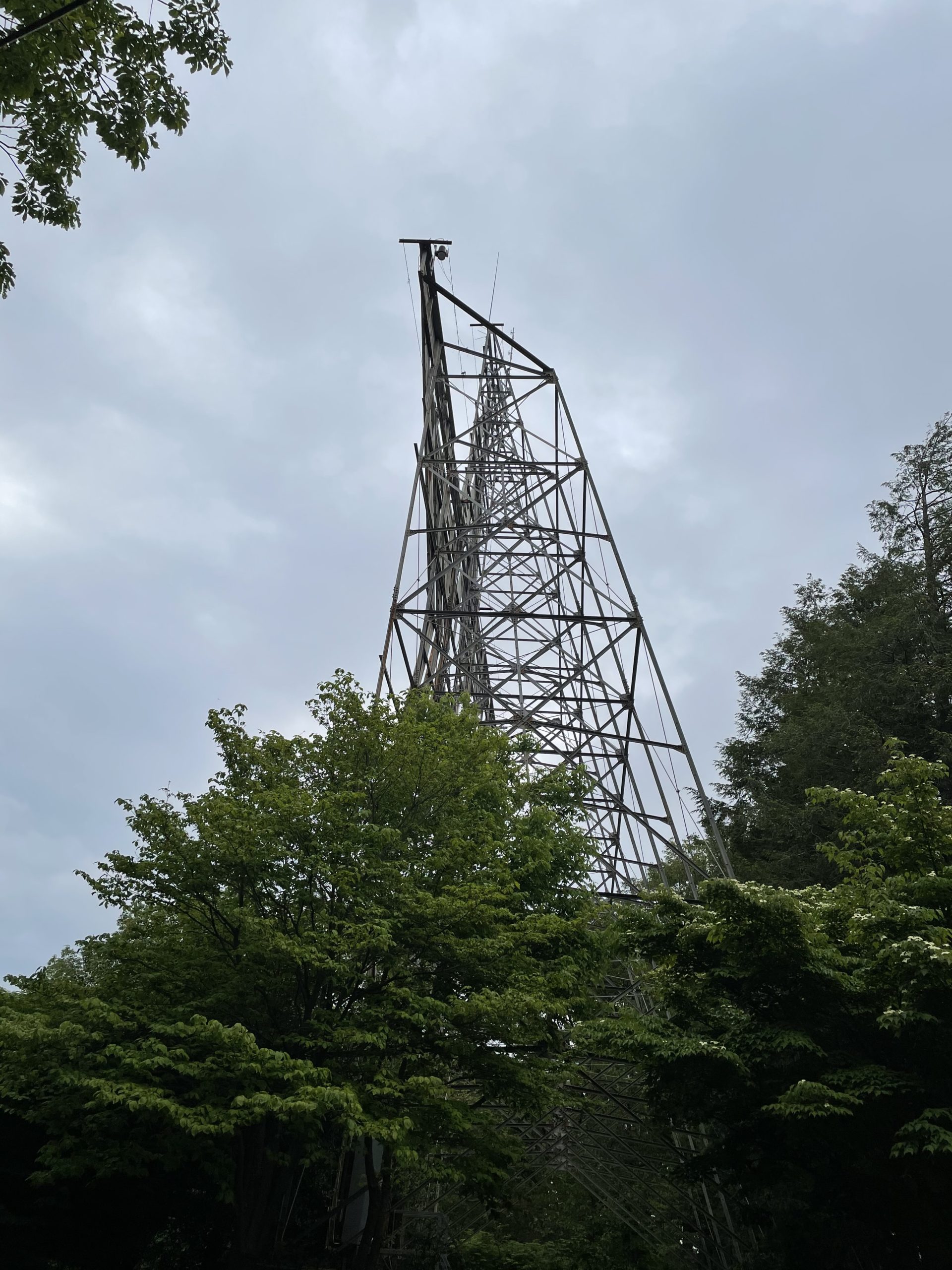
The Overlook
The overlook — which is situated in front of the star — sits on Mill Mountain at an elevation of 1,693 feet above sea level and offers good views of downtown Roanoke…
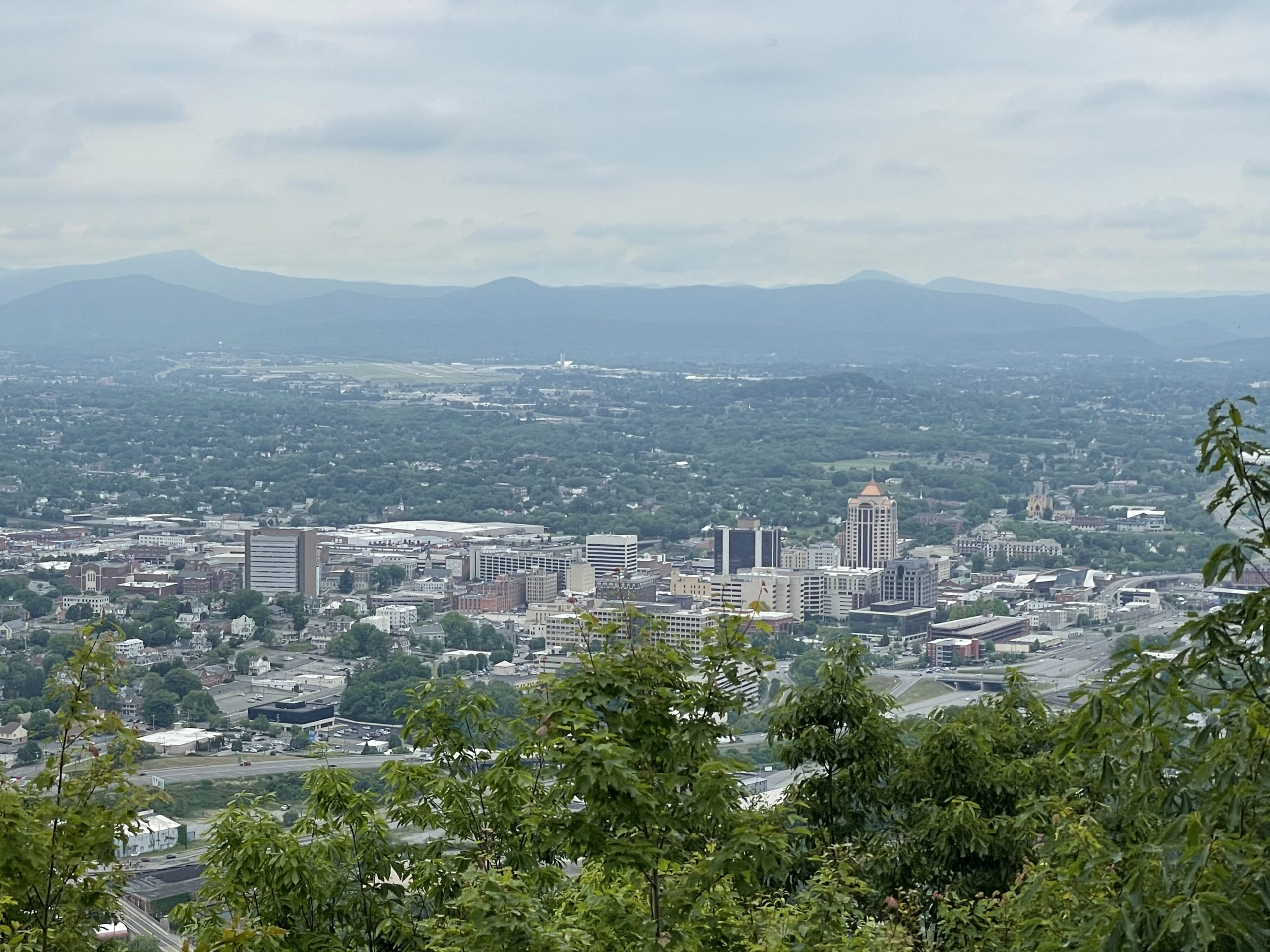
…as well as the Roanoke Valley and the Allegheny Mountains in the distance behind it.

Mill Mountain is part of the Blue Ridge Mountains, which stretch from northern Georgia to southern Pennsylvania…

…and it is also a rare example of a mountain to be entirely within city limits.
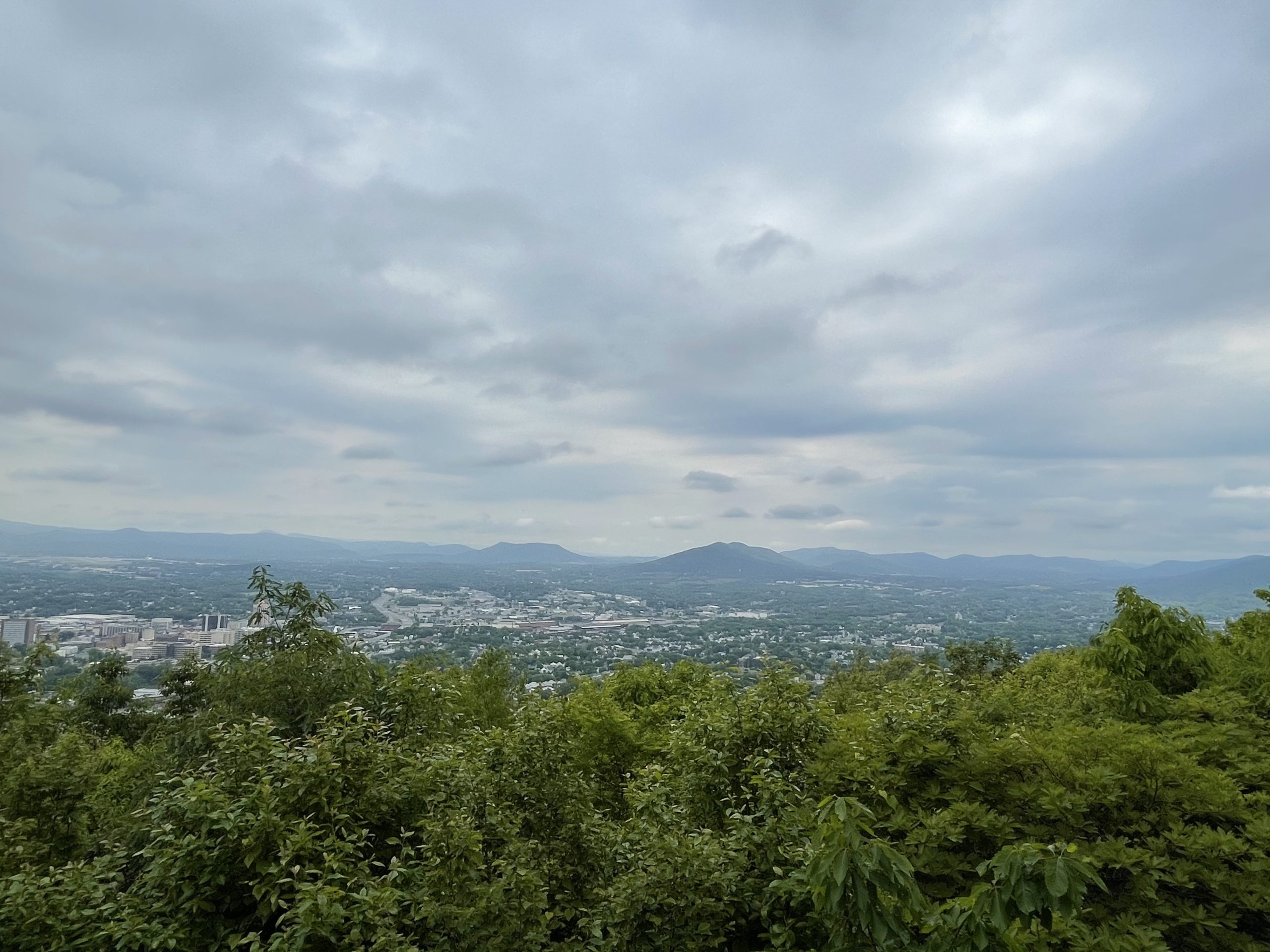
A panel in front of the overlook indicates the names of different mountains visible from the summit of Mill Mountain.
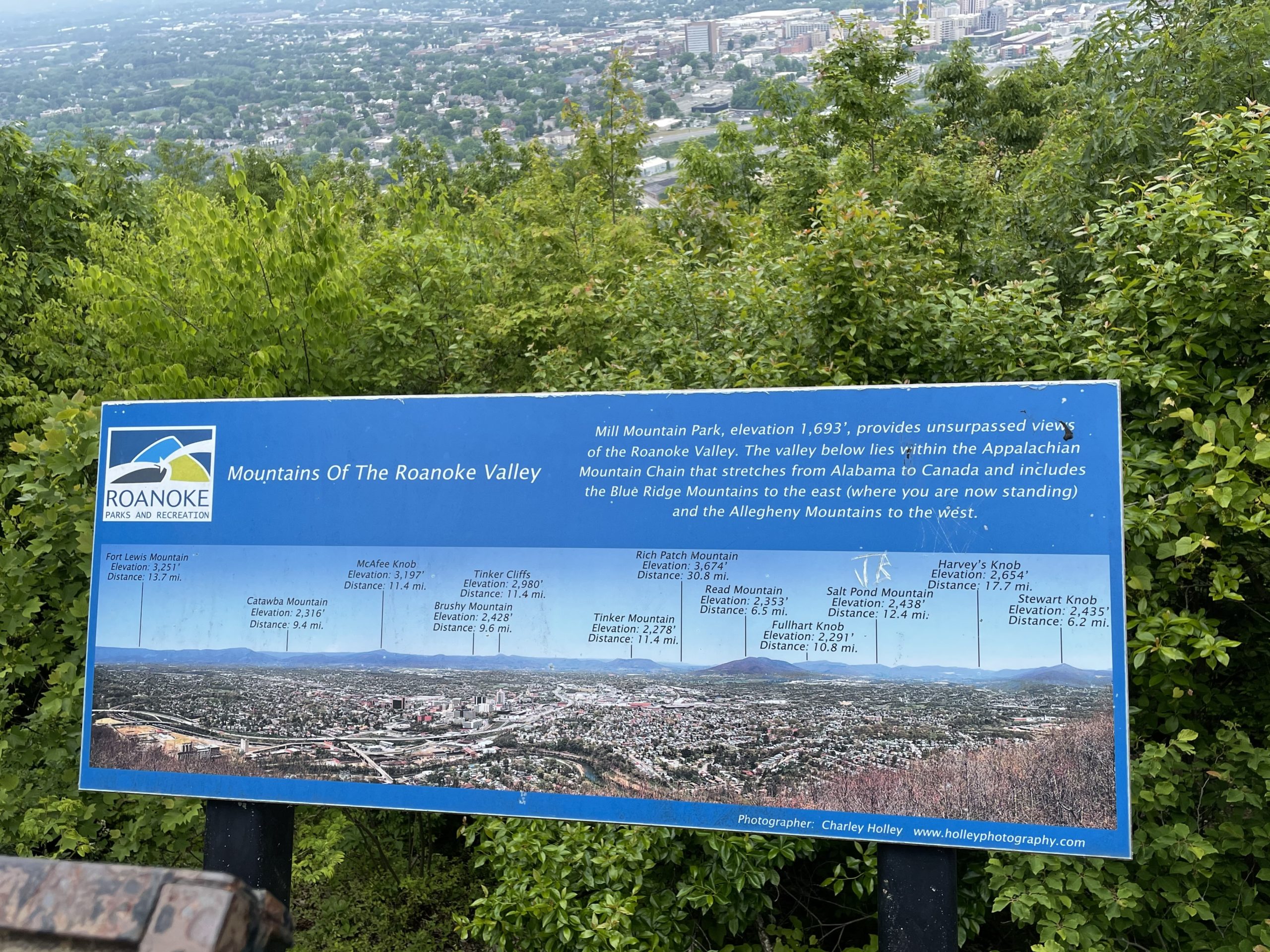
The floor of the overlook also has a diagram of a compass, to indicate which way is north.
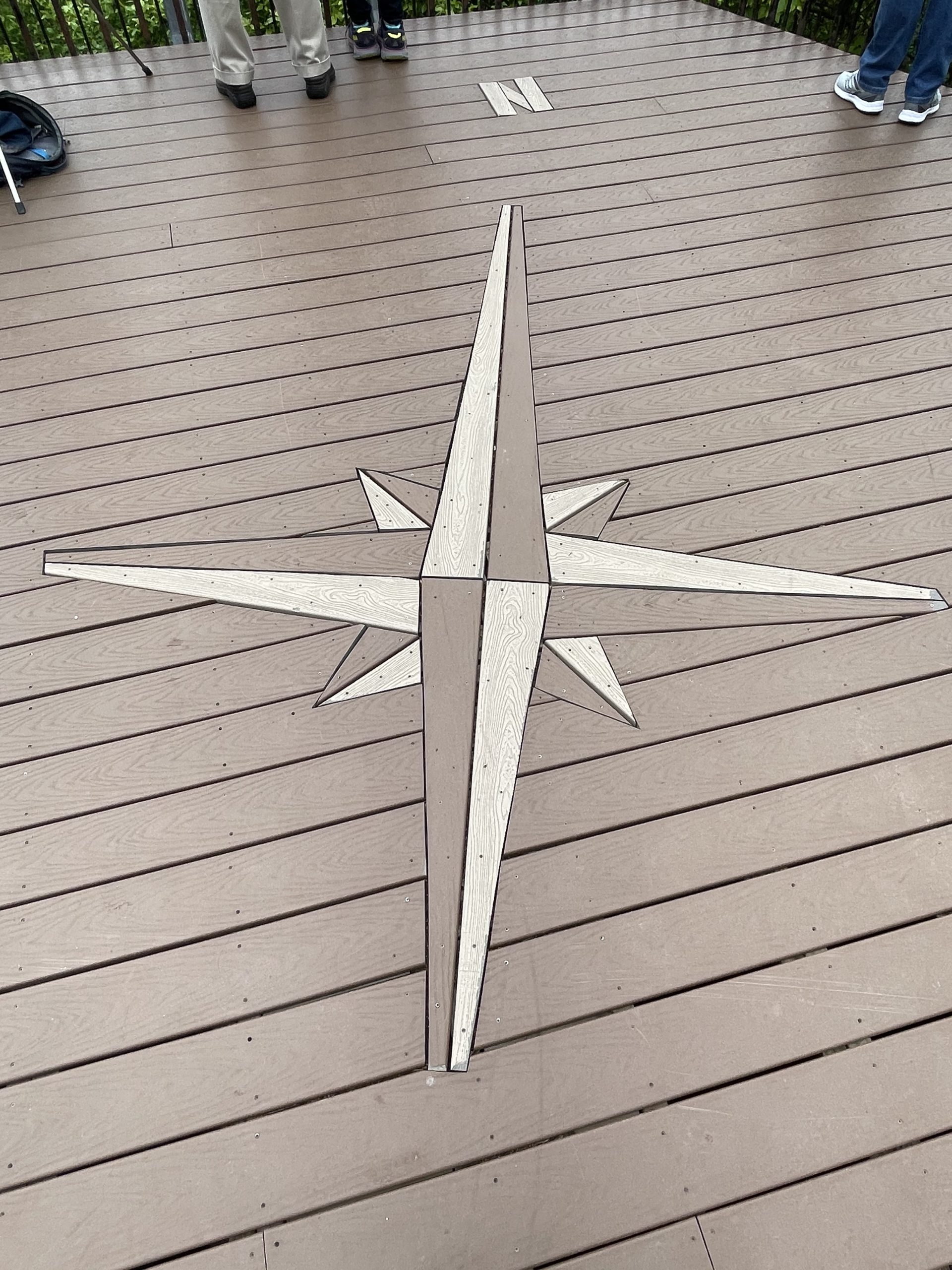
This sign situated below the star indicates that one is on “StarCam“ if he or she is standing on the overlook. Upon visiting this page, the image shown is taken by the camera at the moment one enters or refreshes the page.
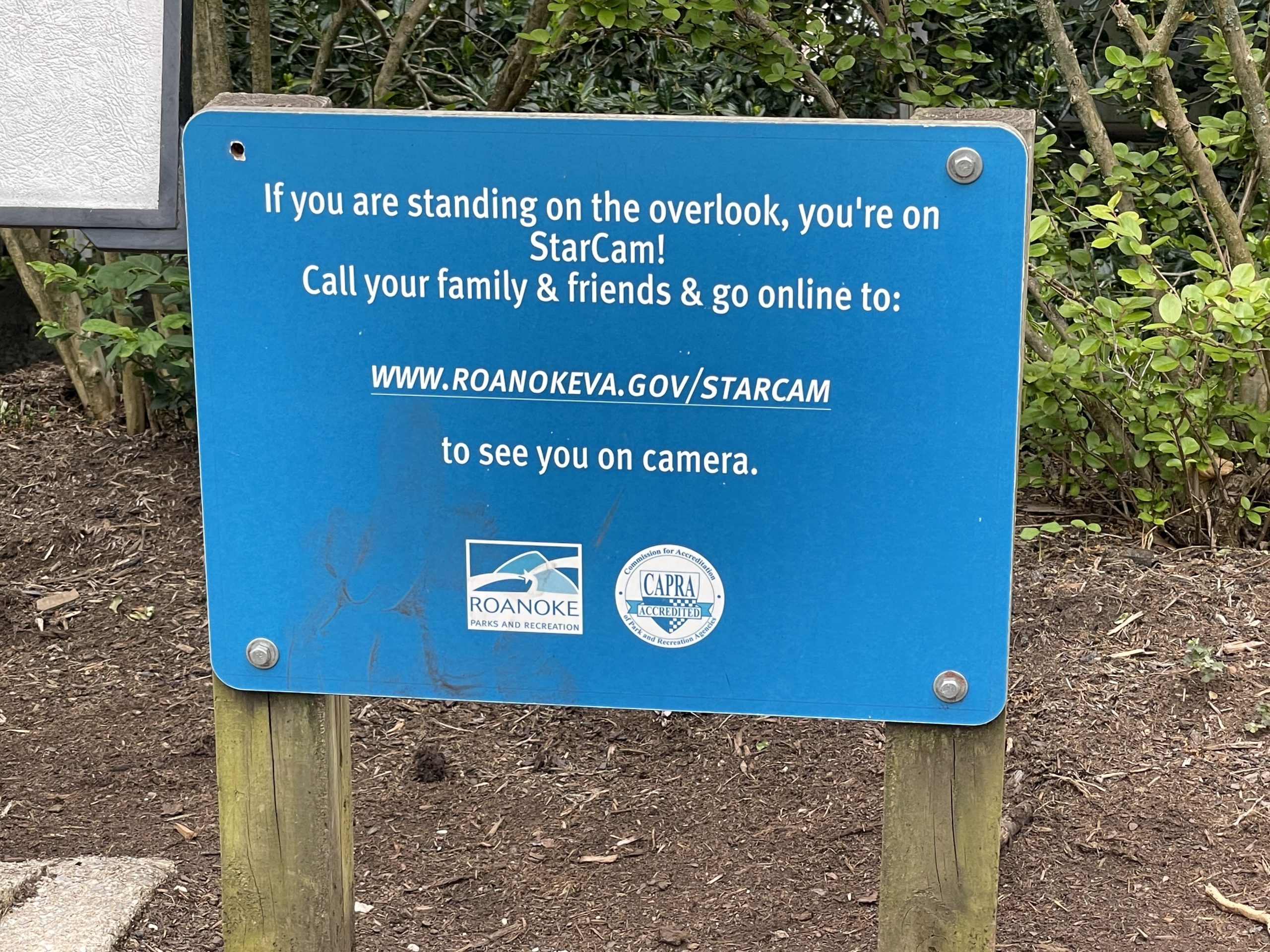
As for the camera itself, I found it situated on the support structure below the star.
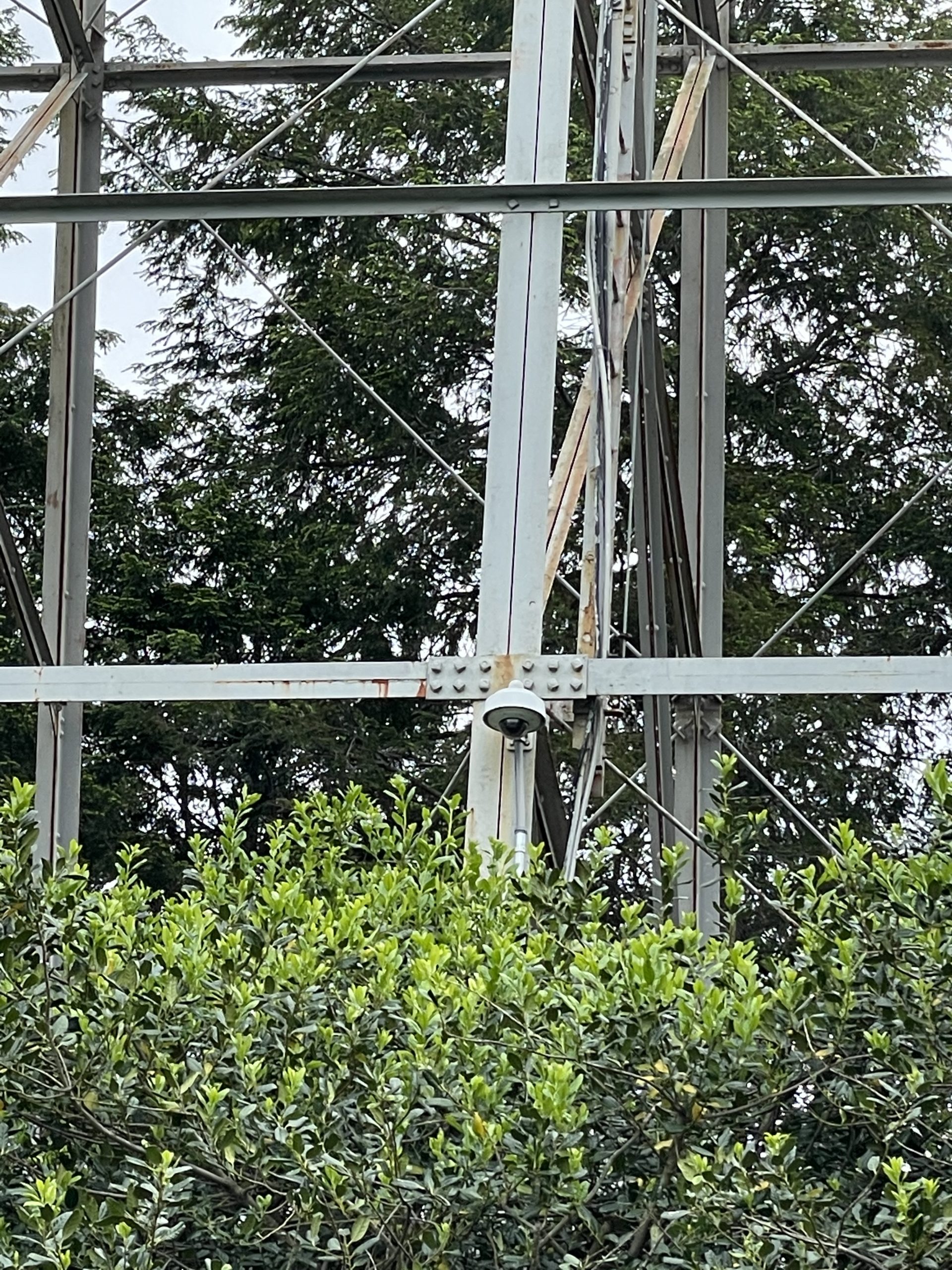
Final Boarding Call
The Roanoke Star is located in Mill Mountain Park, which is only approximately ten minutes from downtown and six minutes from the Blue Ridge Parkway. I did not do anything else here; but the park offers two lookouts, several hiking trails, a playground, outdoor classroom, the Mill Mountain Discovery Center, and the Mill Mountain Zoo. As of when this article is written, some exhibits in the zoo and discovery center may be closed due to the COVID-19 pandemic. Facilities are provided on site.
There is no admission fee to visit the Roanoke Star; however there are fees for organized activities as well as the zoo. Give yourself at least 30 minutes to enjoy the star and the overlook, but give yourself more time if you plan on doing anything else in Mill Mountain Park.
I hope that I have made a point — or five points — that I recommend visiting Mill Mountain Park and the Roanoke Star if you happen to find yourself in Roanoke.
All photographs ©2021 by Matthew Cohen.
